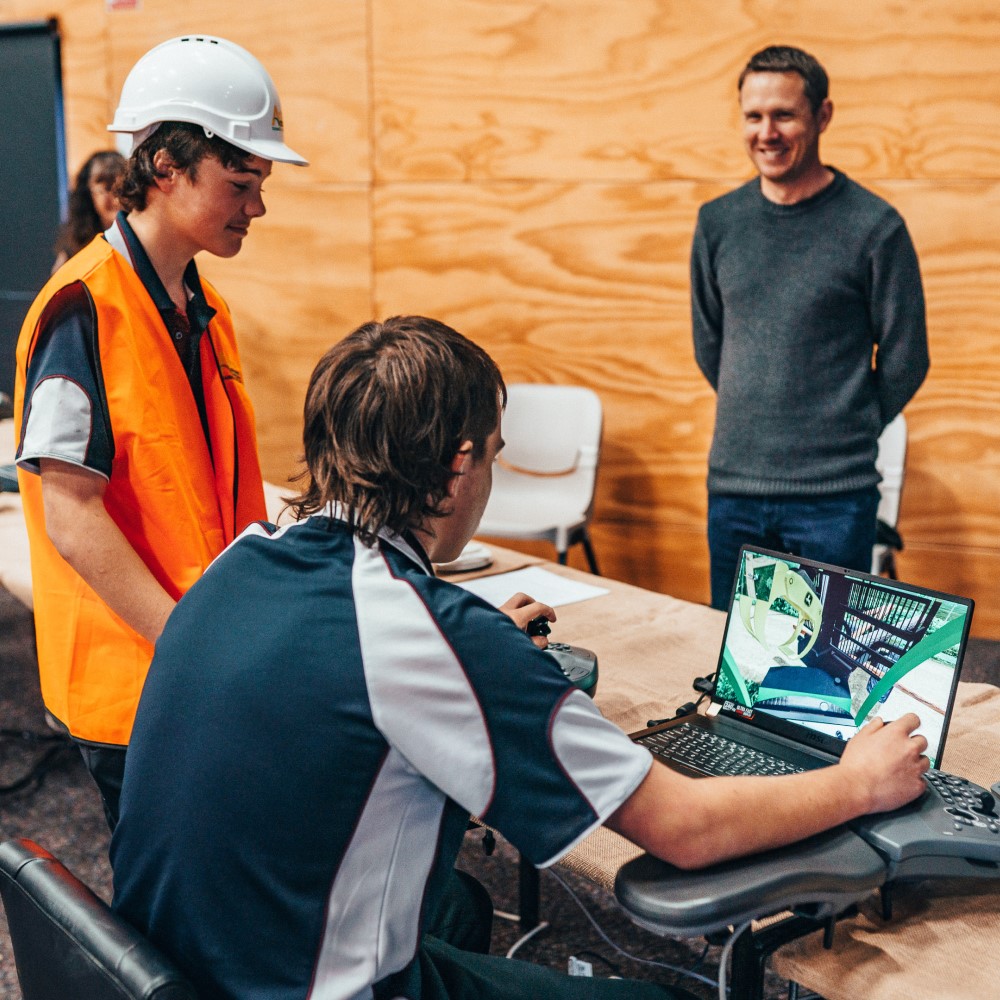VET stands for Vocational Education and Training. It’s practical, ‘hands-on’ and industry-focused learning. You choose your course (and you’ll find hundreds across all sorts of industries) and how you go about it.
How you can do VET

Depending on the course, you can start a VET course in the classroom at school, or through an Australian School-based Apprenticeship or Traineeship (ASbA) – a combination of employment and training while still at school. The flexibility is incredible and with your new skills and qualifications you’ll be able to hit the ground running when you leave school. You could either enter the workforce or go to uni. If you haven’t done an ASbA, you could enter a traineeship or apprenticeship. Or you can keep building on your skills and qualifications and do other VET courses.
Learn more about school-based apprenticeships or traineeships.
VET courses for Years 9, 10, 11 and 12
There are many VET courses to choose from (so you’re sure to find one that’s bang on for you). You can start a VET course at many high schools and colleges across Tassie. You can do units of VET courses before Year 11 and from then you can enrol in a full course. What’s more, VET courses gain points towards your TCE (not sure what a TCE is? Watch the video). Plus, you’ll be learning skills for a career you’re passionate about.
If you’re in high school, talk with your teachers to see what VET courses are available. Students in years 11-12 (and year 10) can check out the course guide.


Registered Training Organisations (RTOs)
VET courses are delivered and assessed by Registered Training Organisations (RTOs) all over Australia. The RTO that’s right for you in Tassie comes down to the course you’re wanting to do, where you’re living in the state, and the availability of training spots. When you’re in school, the majority of VET is delivered by the Department for Education, Children and Young People RTO or Guildford Young College RTO. Some is delivered by TasTAFE too. But the bulk of TasTAFE VET delivery is for post school learners. There are also private RTOs that deliver VET too. If you’re doing an apprenticeship or traineeship, it will also depend on a few factors including who your employer wants to use.
The stuff employers are looking for
Employers are running a business. They’re looking for staff who have ‘real-life’ work skills for their workplace. They want to know you have what it takes from day one to do a particular job so they can grow their business. VET training and qualifications give employers the confidence that you know what you’re doing (at least to a certain level). Equally, VET training and qualifications give YOU the confidence to go out into the workforce and shine.


Build on your qualifications to get to where you want to go
VET qualifications are nationally recognised. So, a VET course in Hobart (say a Certificate II in Community Services) can help you to land an entry-level job in the health sector, anywhere in Australia. But it doesn’t stop there – you can gain more qualifications. You might decide to complete your Cert III in Community Services and then do a Cert IV in Youth Work to progress your career (it’s completely up to you). Also, courses are of shorter duration than university. We’re talking months, not years.
How you can build your career with VET
Meet Jordan
Jordan is a friendly, caring, people-person. Jordan completes a Certificate II in Community Services in year 11, and the following year goes onto complete an Australian School-based Traineeship in Childcare. Jordan goes onto university to do a Bachelor of Education (Early Childhood). Now in his final year he is currently deciding whether to work in childcare or teaching.


Meet Anna
Anna loves being outdoors and keeping fit. As part of her Year 11 and 12 studies, Anna completes a Certificate II in Sport and Recreation. Anna gains enough points to be awarded a TCE. Over the next few years she completes a Certificate III and IV in Fitness. Anna currently works as a personal trainer for a gym and is thinking of starting her own business.
Truth about VET
1. VET graduates earn similar wages to university graduates (if not more).
2. VET graduates have a higher employment rate than university undergraduates (more than 78% find employment after training).
3. There are hundreds of VET qualifications (from nursing, business, agriculture, tourism, community services and more).
Trash about VET
1. VET graduates earn low wages.
2. VET graduates struggle to find work
3. VET only caters for traditional trades.

Need a hand?
To get an idea of VET courses and RTOs available near your school, talk with your teacher or Career Advisor

